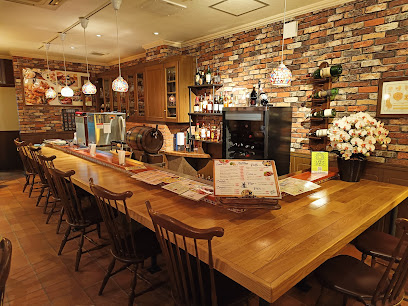
Shirakawa-go: A Timeless Journey into Japan's Heritage
Discover the UNESCO World Heritage site of Shirakawa-go, where traditional Japanese farmhouses harmonize with breathtaking landscapes in Gifu Prefecture.
Nestled in the heart of Gifu Prefecture, Shirakawa-go is a UNESCO World Heritage site celebrated for its stunning traditional gassho-zukuri farmhouses and breathtaking natural surroundings. This picturesque village offers tourists a unique glimpse into Japan's rural past, with its thatched-roof houses harmoniously blending into the lush mountains. Visitors can explore the rich history, enjoy seasonal festivals, and appreciate the beauty of this serene destination, making it a must-visit for those seeking an authentic Japanese experience.
A brief summary to Shirakawa-go
- Ogimachi, Shirakawa, Ogimachi, Ono District, Gifu, 501-5627, JP
- +815769-6-1311
- Visit website
Local tips
- Visit during the winter months to see the village blanketed in snow, creating a picturesque winter wonderland.
- Take a guided tour to learn more about the history and architecture of the gassho-zukuri farmhouses.
- Sample local specialties like gohei-mochi and enjoy the regional sake produced in the area.
- Explore the hiking trails nearby for stunning views of the village and surrounding countryside.
- Consider staying overnight to experience the peacefulness of the village after day-trippers have left.
Getting There
-
Car
If you are driving from any point in Hida, take Route 158 heading towards Takayama. Follow the signs for Shirakawa-go. The journey will take approximately 1 hour and 30 minutes depending on traffic. Once you reach Shirakawa-go, you can park in the designated parking areas. Note that parking fees may apply, usually around 1,000 yen for a day. Keep in mind that during peak seasons, parking can fill up quickly, so arriving early is advisable.
-
Bus
For those using public transportation, take a bus from Hida-Takayama Station. The Nohi Bus service operates direct routes to Shirakawa-go. Check the schedule as buses may not run frequently, especially in the early morning or late afternoon. The trip takes about 50 minutes and costs approximately 2,000 yen one way. Make sure to buy a round-trip ticket if you plan to return on the same day, as it can save you time and ensure your seat.
-
Train and Bus Combination
Alternatively, you can take a train from Hida to Takayama Station, which takes around 30 minutes. Once at Takayama Station, transfer to the Nohi Bus to Shirakawa-go. This option may take more time overall (approximately 1 hour and 30 minutes total) but allows you to enjoy the scenic train ride first. The combined cost for the train and bus will be similar to taking the bus directly.
Discover more about Shirakawa-go
Iconic landmarks you can’t miss
Hida no Sato Open Air Museum
32.6 km
Experience the rich heritage of rural Japan at Hida no Sato Open Air Museum, where history comes to life amidst stunning natural beauty.
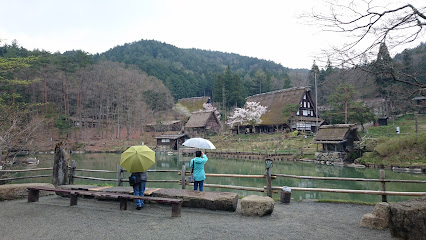
Hida Kokubunji Temple
33.7 km
Explore the serene beauty and rich history of Hida Kokubunji Temple, a must-see Buddhist landmark in Takayama, Japan.
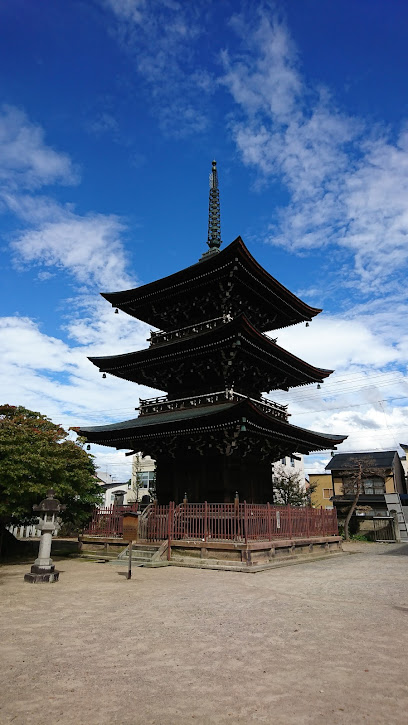
Takayama Jinya
34.2 km
Explore the rich history and serene beauty of Takayama Jinya, a former government outpost showcasing Japan's Edo period architecture.
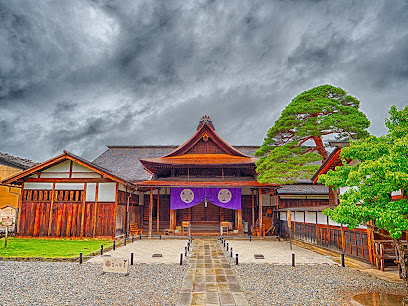
Daijoji Kyuryo Park
37.7 km
Explore the lush landscapes and historical treasures of Daijoji Kyuryo Park in Kanazawa, a tranquil haven for nature lovers and cultural enthusiasts.
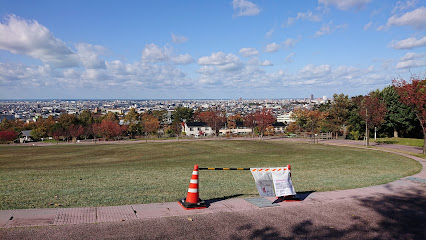
Inotani Checkpoint Hall
38.1 km
Explore the Inotani Checkpoint Hall for a captivating journey through Toyama's local history and cultural heritage.

D.T. Suzuki Museum
39.9 km
Explore the D.T. Suzuki Museum in Kanazawa, a serene retreat that blends Zen philosophy, art, and nature for an enriching cultural experience.

Shofukaku garden
40.0 km
Discover the serene beauty of Shofukaku Garden in Kanazawa, a tranquil oasis showcasing traditional Japanese landscaping and seasonal flora.
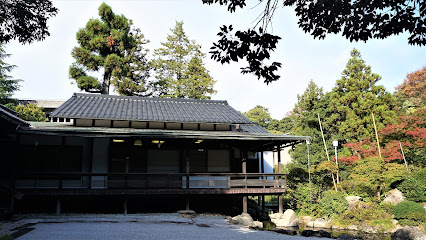
Kenrokuen Garden Kodatsuno Gate
40.0 km
Discover the serene beauty of Kenrokuen Garden, a top-rated attraction in Kanazawa, where nature and history intertwine in a stunning landscape.

Kinjo Reitaku Sacred Well
40.1 km
Experience the serene beauty and cultural significance of Kinjo Reitaku Sacred Well, a tranquil historical landmark in Kanazawa, Japan.
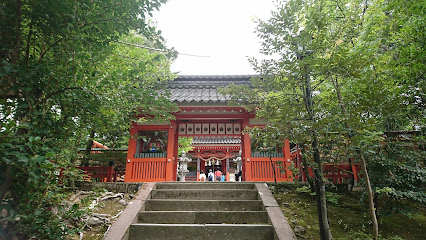
Ryuseki
40.1 km
Experience tranquility and natural beauty at Ryuseki Garden, a serene retreat in Kanazawa, perfect for relaxation and nature exploration.

Sekirei-jima (Wagtail Island)
40.2 km
Explore the serene beauty of Sekirei-jima, a picturesque garden in Kanazawa, where nature meets tranquility. A must-visit for every traveler in Ishikawa.
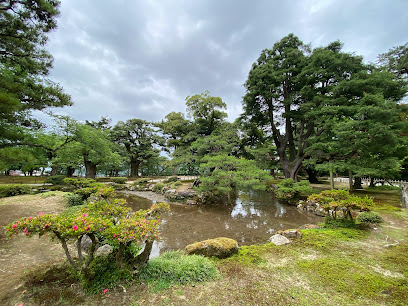
Kenrokuen Garden Kamisaka Gate
40.2 km
Explore the serene beauty and cultural heritage of Kenrokuen Garden, a must-visit destination in Kanazawa, Japan.
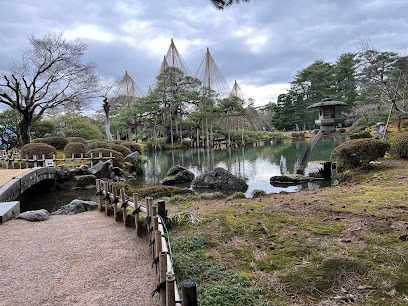
Kenroku-en
40.3 km
Discover the beauty and tranquility of Kenroku-en, one of Japan's most magnificent gardens, nestled in the heart of Kanazawa, Ishikawa.
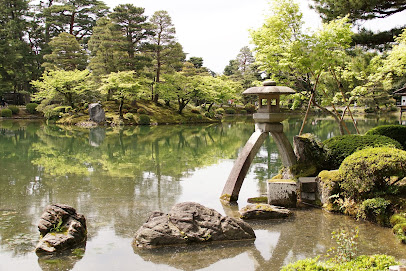
Yoshiro and Yoshio Taniguchi Museum of Architecture
40.3 km
Discover the perfect fusion of modern and traditional architecture at the Yoshiro and Yoshio Taniguchi Museum of Architecture in Kanazawa.
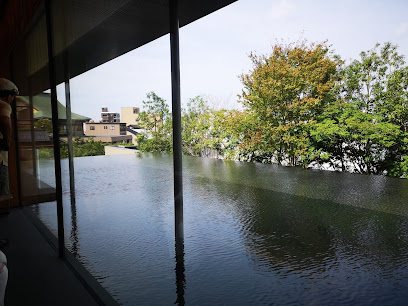
Gankou-Bashi (Flying Geese Bridge)
40.3 km
Discover the enchanting Gankou-Bashi, also known as the Flying Geese Bridge, a serene landmark in Kanazawa's stunning Kenrokuen Garden offering breathtaking views.
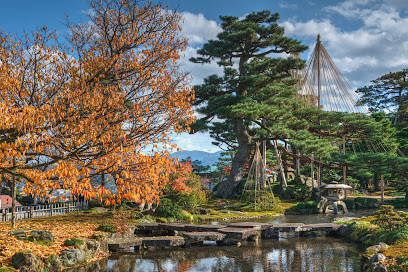
Unmissable attractions to see
Kanda House
0.1 km
Explore Kanda House, a heritage marvel in Shirakawa, Gifu, showcasing traditional architecture and local history in a serene setting.
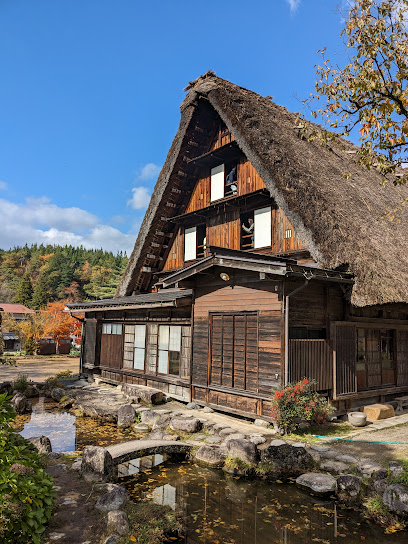
Nagase House
0.1 km
Explore the exquisite Nagase House, a traditional gassho-zukuri farmhouse in Shirakawa-go, a UNESCO World Heritage site showcasing Japan's cultural heritage.
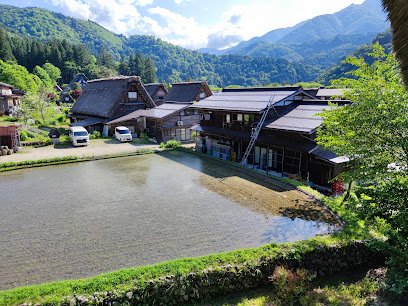
Myozenji Museum
0.2 km
Explore the cultural heritage of Japan at Myozenji Museum in Shirakawa-go, showcasing traditional crafts and historical artifacts in a UNESCO World Heritage Site.
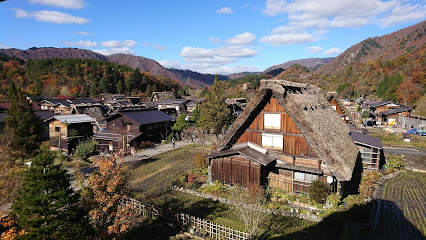
Wooden Walkway
0.2 km
Experience the tranquility of the Wooden Walkway in Shirakawa, a UNESCO World Heritage site surrounded by lush landscapes and historic farmhouses.
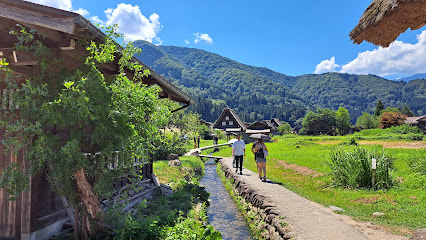
Myozenji
0.2 km
Explore the tranquil beauty and rich cultural heritage of Myozenji Temple in Ogimachi, a must-visit destination for every traveler in Japan.
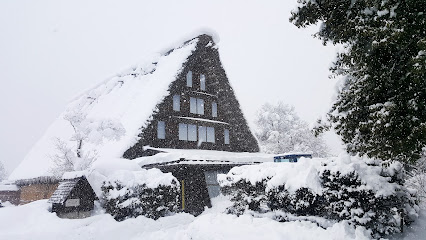
Wada House
0.3 km
Explore the architectural marvel of Wada House in Shirakawa-go, a UNESCO World Heritage site showcasing Japan's rich cultural heritage.
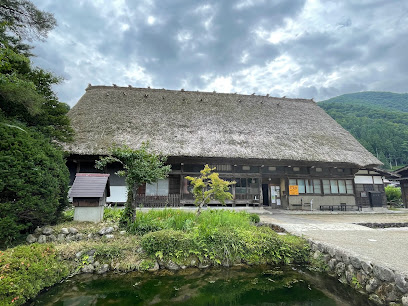
Water Lily Pond
0.3 km
Discover the serene beauty of the Water Lily Pond in Shirakawa, a perfect escape for nature lovers and photographers in Japan.
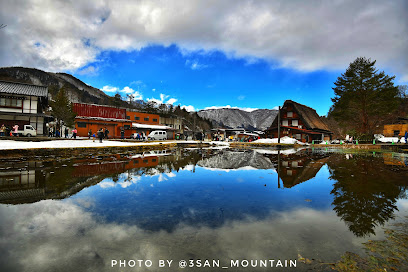
Hachiman Shrine Shirakawa
0.3 km
Discover the serene beauty and cultural richness of Hachiman Shrine Shirakawa, a hidden gem in Gifu, Japan.

Shirakawa-go World Heritage Site Gassho Style Preservation Trust
0.3 km
Explore the enchanting Shirakawa-go, a UNESCO World Heritage Site known for its stunning gassho-zukuri farmhouses and breathtaking natural beauty.

Jin Homura Art Museum
0.4 km
Discover the harmony of traditional and contemporary art in the serene Jin Homura Art Museum, nestled in the historic Ogimachi village.
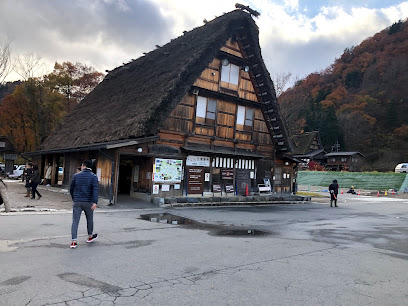
Shirakawa go no Yu
0.4 km
Experience the serene beauty of Shirakawa go no Yu, a traditional onsen nestled in the breathtaking landscapes of Shirakawa-go, Japan.
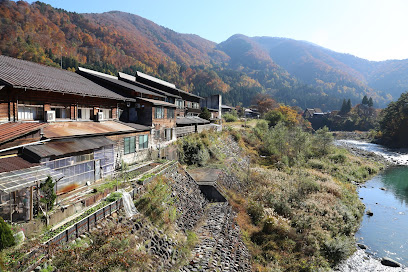
Shirakawa-go Gassho-Zukuri Minka-en
0.5 km
Experience the beauty of Shirakawa-go Gassho-Zukuri Minka-en, a UNESCO World Heritage Site showcasing traditional Japanese farmhouses in stunning natural surroundings.
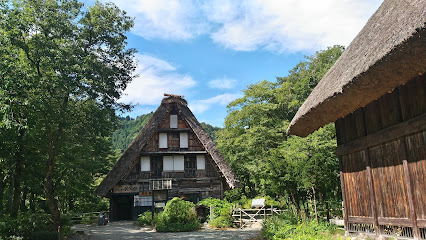
合掌村 Ogimachi
0.6 km
Explore Ogimachi Village, a UNESCO World Heritage site, known for its stunning gassho-zukuri farmhouses and breathtaking natural landscapes in Gifu, Japan.
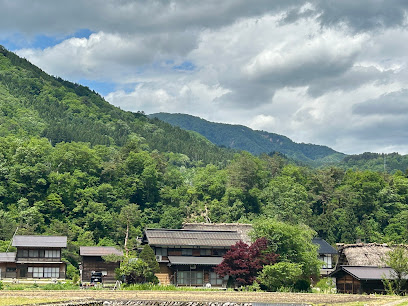
Ogimachi Castle Observation Deck
0.6 km
Discover breathtaking views of Shirakawa's gassho-zukuri farmhouses from the historic Ogimachi Castle Observation Deck, a must-visit tourist attraction.
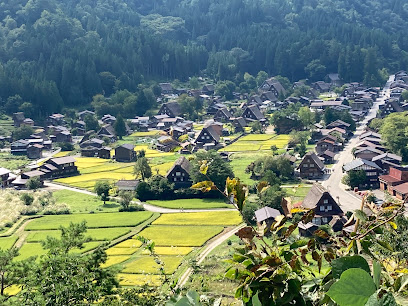
Shiroyama Tenshukaku Observation Deck
0.6 km
Experience panoramic views of Shirakawago at Shiroyama Tenshukaku Observation Deck, a stunning observation point surrounded by natural beauty.
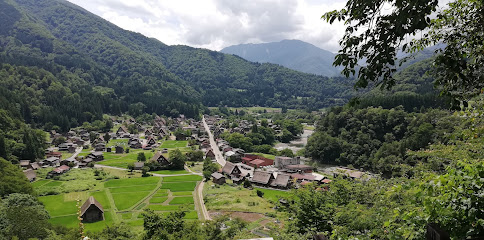
Essential places to dine
Shiraogi
0.1 km
Discover authentic teishoku dining at Shiraogi in Shirakawa - where every meal tells a story steeped in tradition.
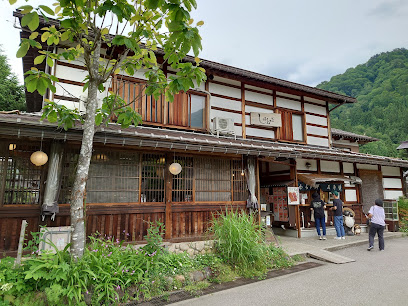
Hidaji
0.1 km
Discover authentic Soba noodles at Hidaji, a charming Syokudo restaurant nestled in Shirakawa's picturesque landscape.
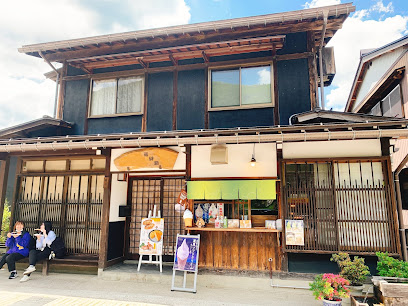
Yamamotoya
0.1 km
Discover authentic soba noodles at Yamamotoya in Shirakawa - where tradition meets deliciousness amidst breathtaking scenery.
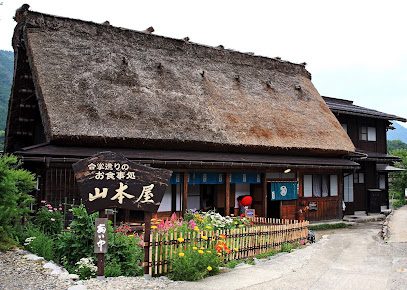
Nomura
0.1 km
Experience authentic Japanese soba noodles at Nomura in Shirakawa—where tradition meets flavor in every bowl.
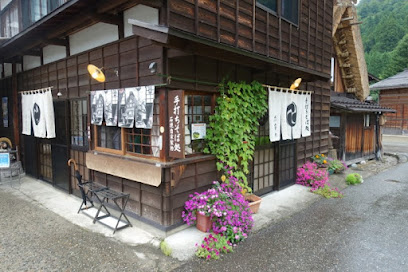
Zensuke
0.1 km
Discover authentic Japanese flavors at Zensuke in Shirakawa-go—home to exquisite kushiyaki amidst breathtaking heritage scenery.
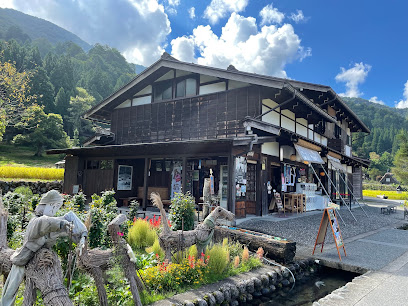
Shiawaseya Kichibei
0.1 km
Experience authentic local cuisine at Shiawaseya Kichibei in Shirakawa-go, where tradition meets convenience amidst stunning scenery.
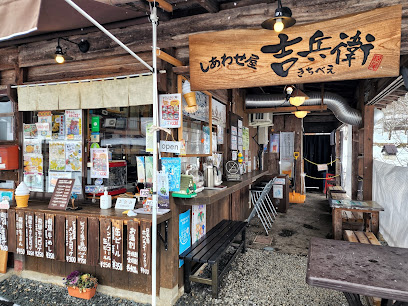
Keyaki
0.2 km
Discover authentic Japanese cuisine at Keyaki in Shirakawa-go—where tradition meets flavor in a breathtaking setting.
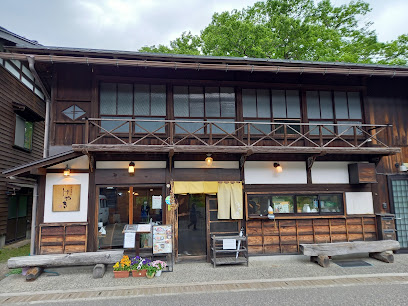
Tanaka-ya
0.2 km
Experience the essence of Japan at Tanaka-ya, where handmade soba noodles meet breathtaking views in Shirakawa-go.
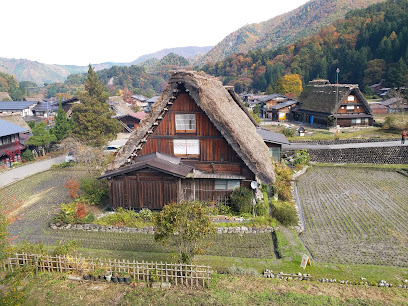
Yukinko
0.2 km
Experience authentic Japanese cuisine at Yukinko in Shirakawa-go amidst stunning landscapes and traditional architecture.
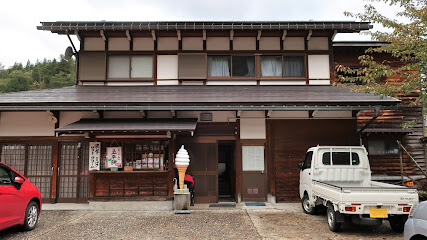
Hakusuien
0.3 km
Experience authentic Japanese dining at Hakusuien in Shirakawa – where tradition meets taste in every dish.
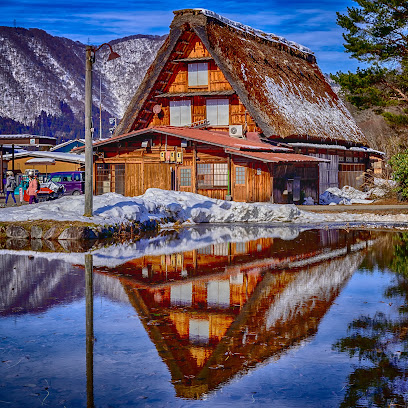
Shirakawago Restaurant Irori
0.4 km
Experience authentic Japanese cuisine at Shirakawago Restaurant Irori, nestled in the scenic beauty of Shirakawa-go's heritage village.
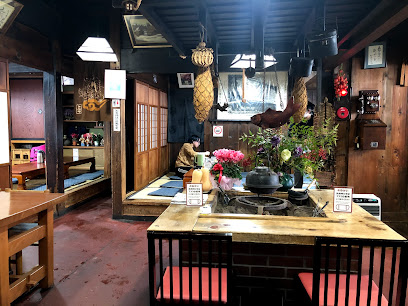
Soba dojo Restaurant
0.4 km
Experience authentic soba noodles in the heart of Shirakawa-go's breathtaking landscape at Soba Dojo.
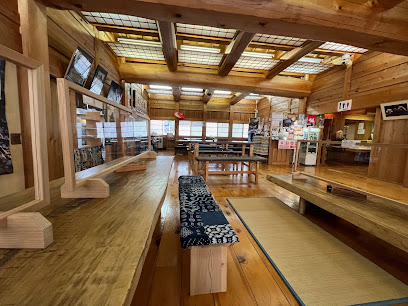
Soba Wakimoto
0.4 km
Savor authentic handmade soba noodles in Shirakawa's scenic Ogimachi village, where tradition meets breathtaking views.
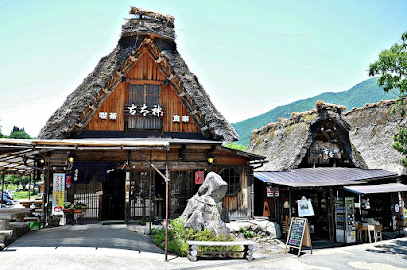
Arai
0.5 km
Experience authentic Japanese cuisine at Arai in Shirakawa, where traditional dishes meet stunning cultural heritage.
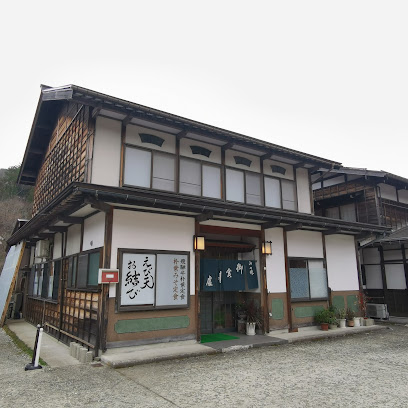
Kita no Sho
0.5 km
Discover authentic Japanese cuisine at Kita no Sho in Shirakawa—where tradition meets flavor in every dish.
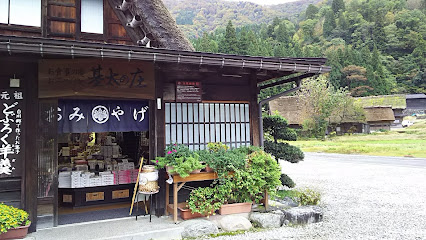
Markets, malls and hidden boutiques
佐藤民芸品店
0.0 km
Discover the essence of Japanese craftsmanship at Sato Mingei Handicrafts Shop in Shirakawa-go, a UNESCO World Heritage Site.
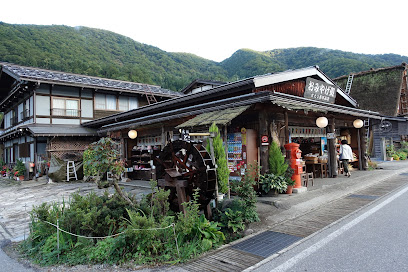
白川郷HAKKO堂
0.0 km
Discover the perfect blend of tradition and taste at 白川郷HAKKO堂, where exceptional coffee meets the serene beauty of Shirakawa.

Kondou Shoten
0.1 km
Discover authentic Japanese liquors at Kondou Shoten in Shirakawa, a treasure trove of local sake and spirits.
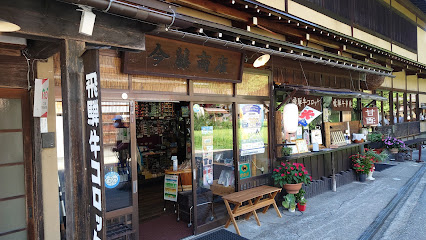
Mamekichi Honpo Shirakawago
0.1 km
Explore Mamekichi Honpo Shirakawago, a quaint souvenir store in Shirakawa-go, showcasing local crafts and delicious treats steeped in tradition.
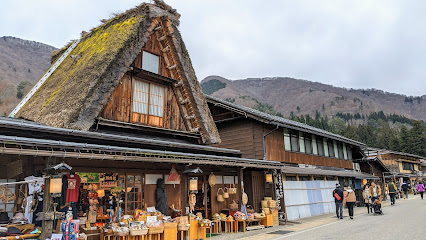
豆菓子専門店「豆吉本舗」 白川郷店
0.1 km
Explore Mame Kichi Honpo in Shirakawa-go for authentic Japanese bean snacks and a delightful cultural experience.
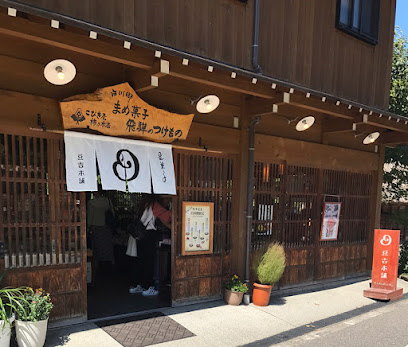
民芸品店おけさ
0.1 km
Explore the charm of Shirakawa at Okesa Souvenir Store, where authentic Japanese crafts and heartfelt memories combine.
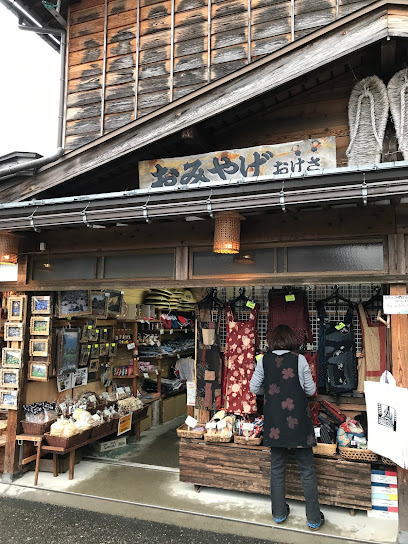
Ochuudo
0.1 km
Discover Ochuudo, the perfect café retreat in Shirakawa-go, offering exquisite coffee and traditional sweets amidst stunning mountain views.
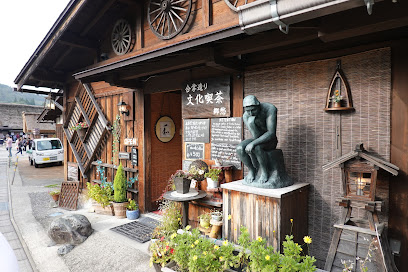
Okuzaemon
0.1 km
Discover unique crafts and traditional home goods at Okuzaemon, a charming store in the heart of Shirakawa-go, a UNESCO World Heritage site.
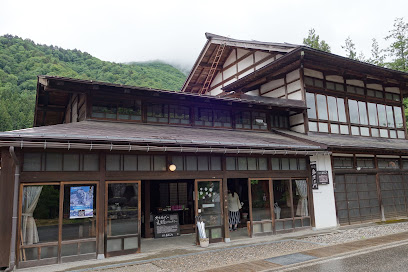
Sanrakudo
0.1 km
Discover the essence of Japan at Sanrakudo, a charming souvenir store in Shirakawa-go offering handcrafted treasures and local delicacies.
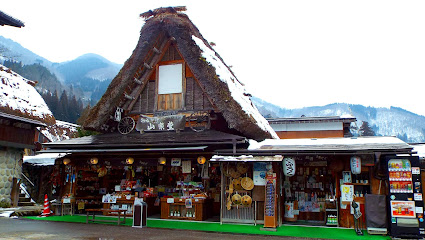
ZEN
0.1 km
Experience the authentic tastes of Japan at ZEN, a Japanese delicatessen in Shirakawa, where traditional cuisine meets serene ambiance.
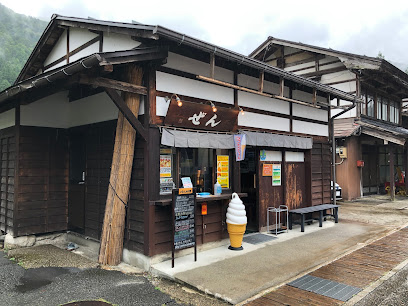
Gassho
0.1 km
Explore Gassho, a charming souvenir store in Shirakawa-go, offering local crafts and delicacies that reflect the beauty of Japan's heritage.
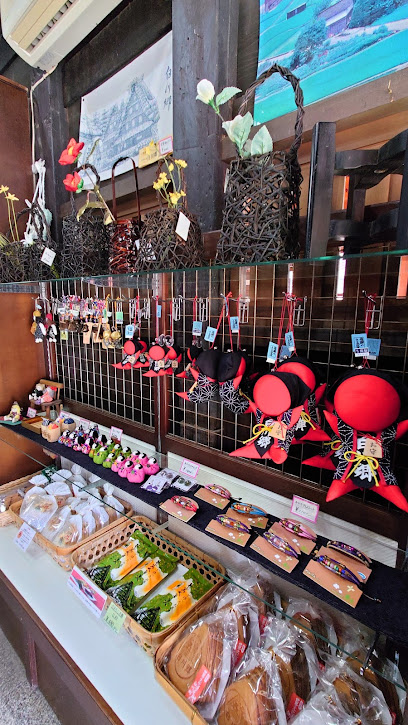
てづか民芸品店 Neo
0.1 km
Explore the enchanting てづか民芸品店 Neo in Shirakawa for authentic Japanese souvenirs and handcrafted treasures.
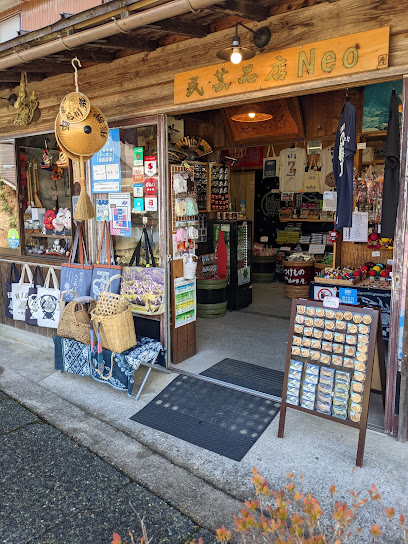
Kataribe
0.2 km
Explore Kataribe Souvenir Store in Shirakawa for authentic Japanese crafts and unique gifts that embody the spirit of traditional culture.
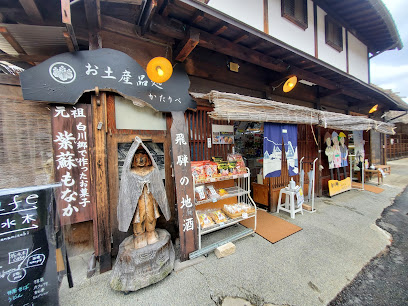
”Kyoshu” Traditional Coffee Shop
0.2 km
Experience authentic Japanese coffee culture at Kyoshu Traditional Coffee Shop in scenic Shirakawa-go, a UNESCO World Heritage site.
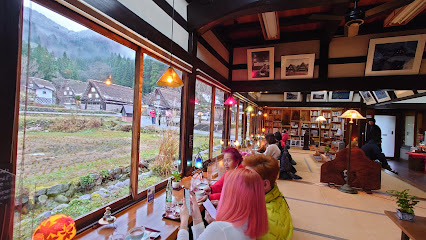
Shirakawago Purin no Ie (Pudding House)
0.2 km
Experience the sweetness of Shirakawa-go at Purin no Ie, renowned for its delicious puddings and delightful desserts in a charming café setting.
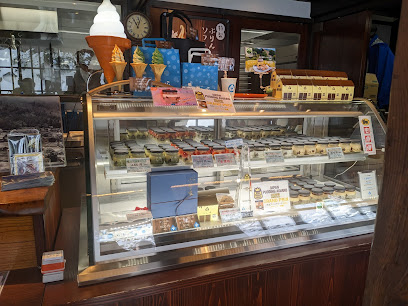
Essential bars & hidden hideouts
だんご屋 ゆたか
0.2 km
Experience the sweetness of traditional Japanese dango at だんご屋 ゆたか, a charming takeout restaurant in the historic village of Shirakawa.
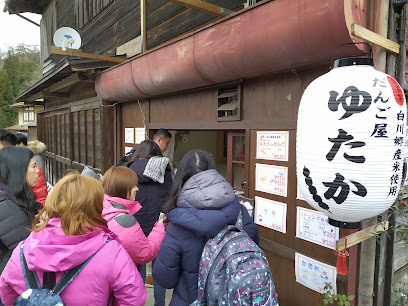
Shiroyamakan
0.5 km
Experience the essence of Japan at Shiroyamakan, a traditional inn offering authentic cuisine and stunning views in Shirakawa.
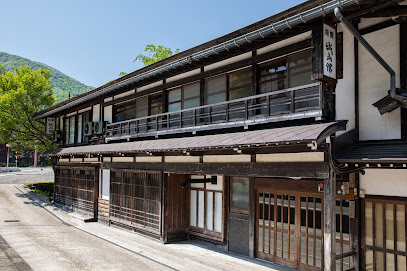
Koshiyama
0.9 km
Discover Koshiyama in Shirakawa for authentic soba noodles and unique antiques, a perfect blend of culinary delight and cultural charm.
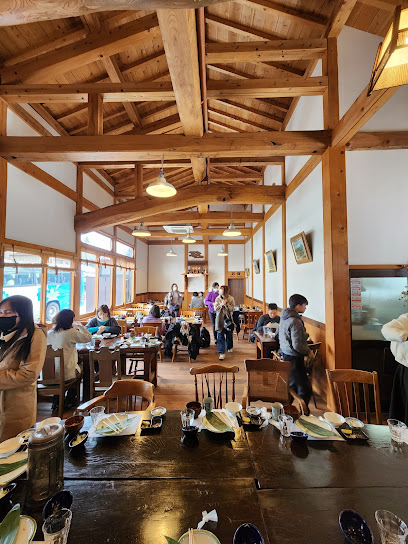
Tenkara, Shirakawa
1.3 km
Discover the exquisite flavors of authentic Yakiniku at Tenkara, Shirakawa, where quality meets tradition in a picturesque setting.
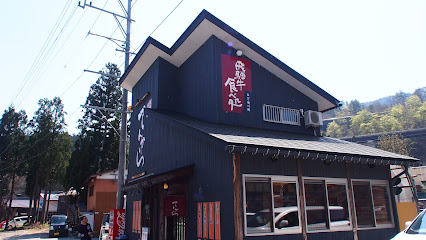
Yamakoshi
1.7 km
Experience the authentic taste of Japan at Yamakoshi, a charming soba noodle shop in Shirakawa, where tradition meets flavor.
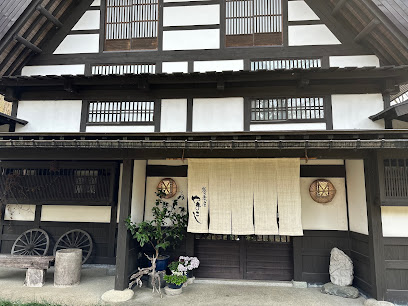
リトルビレッジ
25.3 km
Discover the vibrant atmosphere of Little Village Bar in Hida, Gifu, where local flavors and friendly faces create an unforgettable experience.
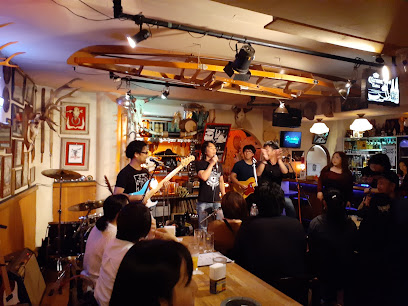
リトルビレッジ
25.3 km
Experience the unique blend of traditional Japanese hospitality and local flavors at Little Village, Hida's beloved bar.

Shinanoya
25.4 km
Discover the vibrant flavors of traditional Japanese izakaya dining combined with exquisite wines at Shinanoya in Hida, Gifu.
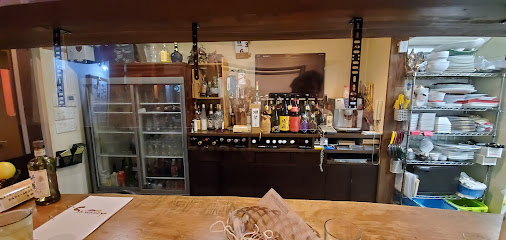
ヒダノオクブルワリー
25.4 km
Experience the best of Gifu's craft beers at Hida No Oku Brewery in the charming town of Hida.
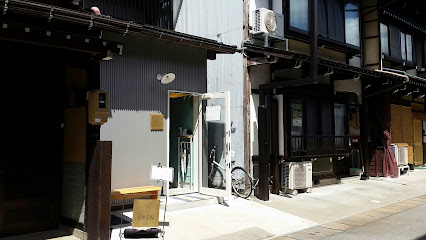
Marin Blue
25.4 km
Experience the warmth of Hida's nightlife at Marin Blue, a charming bar offering local drinks and a cozy atmosphere for all travelers.

Cinq
33.3 km
Experience the charm of Takayama at Cinq, a cozy bar offering exquisite drinks and a welcoming atmosphere for all visitors.

Barrl
33.6 km
Discover the vibrant nightlife at Barrl, a cozy pub in Takayama, where locals and tourists come together for a memorable evening.
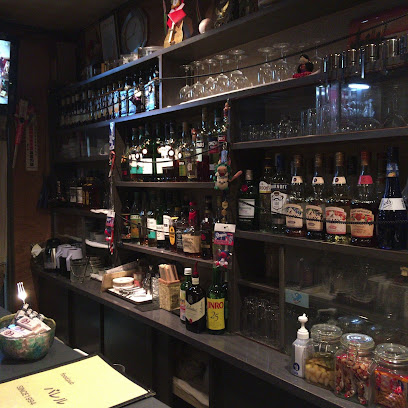
Yu
33.7 km
Discover Yu in Takayama, where expertly crafted cocktails meet a cozy ambiance, perfect for a memorable night out.
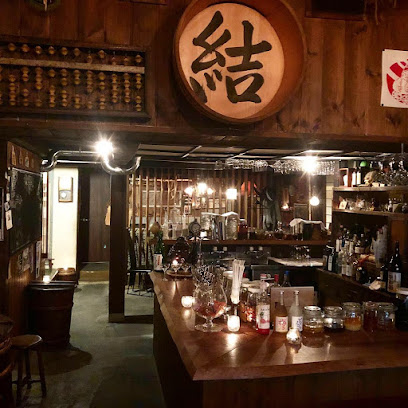
Hids' cafe & bar
33.7 km
Experience the unique blend of café culture and bar vibes at Hids' Cafe & Bar, a must-visit spot in the heart of Takayama.
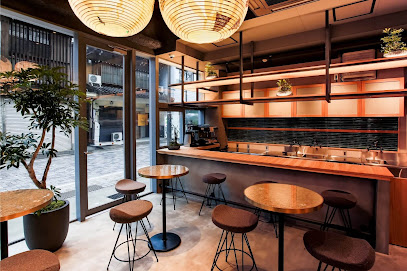
Botchini
33.7 km
Discover the charm of Botchini, a cozy bar in Takayama, serving local delights and exquisite drinks in a warm atmosphere.
